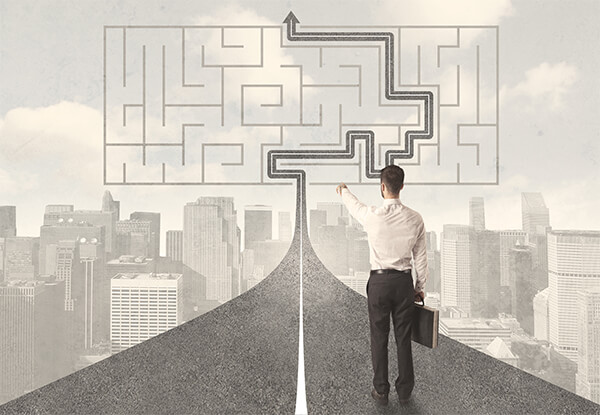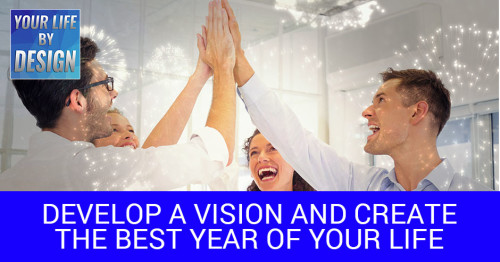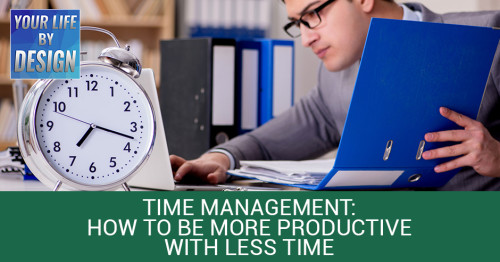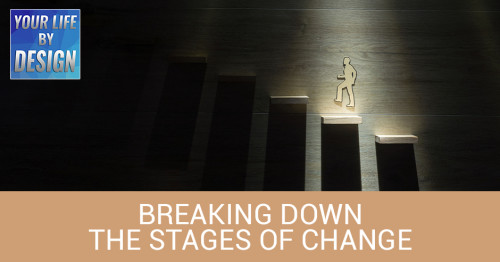Develop A Vision And Create The Best Year Of Your Life
Are you wary of New Year’s resolution and you’re disillusioned by the struggle to get clear on what you want and actually achieve it? Do all the possibilities and parts to achieving them overwhelm you so much that you often don’t accomplish what you set out to do? Is reading this making you feel tired and yearn for some Ben & Jerry’s Chunky Monkey Ice Cream? Then maybe that’s just me. First of all, I want to release you from any guilt or shame around the struggle to get clear and your growth and actually achieve them. It’s not your fault. You’re not to blame. It’s so common, it’s almost epidemic. The reason is we aren’t really taught how to do this and a lot of us out there just met and follow someone else that did it and it doesn’t work for many others. I realized after a while the standard approaches did not work for me or my clients. This was my struggle for years. I keep fine-tuning the model until I broke down most of the success stories and discovered something. Most people never develop a vision for their life, let alone for the year. Most people have bigger TV screens than their vision.
There’s a reason why only 3% to 5% of a population ever achieve any real level of freedom or fulfillment, creative, financial or otherwise. It’s only because 3% to 5% of people ever get clear on the highest leverage goals, uncover the unconscious patterns, sabotaging them, and have a principle-centered system to achieve them. You don’t have to be like most people, that’s not your destiny if you decide. That’s why I’m giving you a very special opportunity to turn this path around once and for all and start creating the best year of your life year after year. This is exactly how I do it, this is how I created a life I have. I helped many people around the world do the same. This is not like any other goal-creating planning or success system out there. In fact, it’s almost exactly opposite to what most people teach.
One of the biggest mistakes people make when creating a plan for the New Year is that they don’t take the time to complete the last year. The result is that they lose many of the lessons and blessings and carry a lot of unfinished business into the New Year resulting in stagnation, limitation, and becoming stuck. How do you do this the right way? I will show you step by step in Life by Design Podcast. If you feel any anxiety as you hear this, recognize it as resistance or your ego trying to keep you safe and keep things the same. I know how the ego works and it’s probably giving you all reasons and excuses to stall, wait and think about it. That’s what the ego does. Anything it can to prevent you from truly changing because, for the ego, change is scary and painful.
Are day-to-day stresses taking over your life from work, your family, to taking care of your health and everything else? It seems that life can be overwhelming and leave us feeling drained and empty. This is due to a lack of clarity and priorities. When we are unclear about what matters we lose our way in our lives. Clarity about where we are and where we are going to determines the quality of our lives. It governs the feeling and expression of emotions, and that’s what ultimately enables us to be successful in life. When your priorities are misplaced, they can cause stress and illness and negatively impact the healthy management of our daily tasks and stresses. Most people, however, don’t know how to get clear about what matters.
Once you get the power of priorities in your life and how managing priorities can help us become balanced healthy and de-stressed, you can begin to move towards designing your life. It’s the beginning of a perfect opportunity for you to take charge of your life. The Design Your Life model has three stages to be effective. In fact, the first stage is the most important stage. The first one of the three stages is to evaluate. The second one is to start. The third one is to implement. Many times, both setting and time management fail to bring about long-term results. This is because the first stage, evaluate, is overlooked. Many typically rushing to the third stage which to implement, assuming that they already got all the ducks in a row.

For all the years that I’ve personally designed and implemented plans, when something I thought worked as planned, it’s because I overlooked stage one, evaluate. I did not do it thoroughly. How do you go about evaluating something? How do you go about evaluating your life? This was a process I created for myself about 35 years ago and I kept refining it. For the last 25 years, graduates of my successful mission program have been using a more advanced version of this process to develop a deeper awareness of their life. I used to call it an updating process for them. Some people update their computers every day, others may do it once a week, a month or a couple of times a year. How often have you updated yourself on where you are in your life and where you are heading?
Divide your life into the following categories. I would give you the simple version first. We will look at your relationships, emotional and we look at your health and then we look at your wealth or your business and your spiritual life. For those of you who want to make greater distinctions, we have the more detailed version. We have the emotional, being aware, self-modulation, relationship, family, work, friends and community. We have physical nutrition, diet, weight, exercise, routine and health habits. We focus on your mind, your mental mindset, thinking patterns, and ability to innovate. Then you have your career pathway, progression, satisfaction, financial, current ability to manage midterm and long-term and your living environment. Is your work and living environment supporting you?
Spiritual, are you part of an established church, temple or institution or do you have a broad-ranging humanitarian perspective? In each category, you give it a score from one to ten, one being the least and ten being the most. You also write a one-line statement about that area of your life. Then you assess your life in each category five years ago and now. This gives you a trajectory of where your life is heading. There are other models that focus on giving you a score of where you are in your life. However, the Life By Design model gives you a perspective unlike just doing a snapshot of only where you are right now. For example, let’s take a category like physical. This is the example I often use in my seminars, health. Five years ago, the statement, “Very unfit, exercise, channel surfing on the plasma screen.” Five years ago, James was unfit. The only exercise that he did was going to the table from work, he walked to the fridge, took out his packet of potato chips, and sat down in front of a plasma screen. James let his fingers do the walking as he channel surf. One day, he saw a fitness guru on the screen. James got inspired. The very next day, he went out and bought track pants and track shoes.
James started walking five days out of seven. Six months later, he graduated to running. One year later, he joined the gym. Within six months, he was a part-time gym instructor after work. His statement, he is very fit. James exercises six days a week. He was so enthusiastic about fitness that when his friends see him coming, they get tired. I thought that unless you have a current map or where you came from the way you are right now in its context. If you never had problems with your health and you suddenly develop the health problem three years ago, when they look at your past five years and where you are, you will recognize the changing nature of your health status as you start to age. However, you always are relatively unfit with poor health habits, like James and the example and you start to develop healthier habits, then that too will show up.
He said, “Project what happened,” and is happening in the future. If you had poor health habits and the lack of vitality, doing nothing means it will only get worse. I could use the same argument for your financial status as well. This is how I work with my current clients and patients. By having them do the exercise and overview of future outcomes, I have a pretty good idea of where they’re heading and moving towards and if it’s in the right direction. One lucky audience that posts a review on iTunes will win a private confidential consultation and coaching with me on Discovering Your Soul’s Purpose. I will lead you on a unique personal journey to discover your mind, body and psychosomatic map of your life. You will get a detailed report and the personal 45-minute consultation with me that is worth thousands.
When you do the above exercise, I assume you were as honest as you could be with yourself. Second, you write in one sentence in that category some of my seminar participants group others could not. The more you can write, the more distinctions you can make. The more precise is your evaluation of your current status. The more precise is your evaluation, the more variables you can choose to change. The more choices you have, the greater the capacity for change and growth. In case the above remains unclear to you, I will repeat the example of James outlined above.
Suppose under the health category, James had written, “Very unfit,” and leaves everything to the imagination and very little actionable items. Instead, James had written, “Very unfit. Point one, poor nutritional habits. Point two, do not exercise. Point three, overweight by ten kilograms. Point four sleeps at 2 AM and wakes up exhausted.” Comparing A, which is only very unfit and B, meet all the four points in describing the problem with greater precision. James has actually come up with several actionable items. They see the trajectory of where they’re going and decide they want a different path. They’re motivated by the amazing changes. Others see the trajectory and either remain blind to the implications or do too little, too late.
It saddens me when I see this. I pointed out to some of my clients about an impending physical, emotional, or financial disaster based on what happens. After the disaster has occurred, either a stroke, heart failure or bankruptcy, they come back to me and we work with the physical and the emotional rehabilitation. I deeply respect the power of personal choice. Sometimes people only learn from life experience. This can be bitter. I do hope that it’s not you. This next year could be your year. Let me help you make it the very best year of your life. You and only you can decide to make it so. That is the very first step to your brilliant future waiting for you. Your life is a gift, design it. Do what methods and join me each week as we get closer to designing the life of your dreams.










